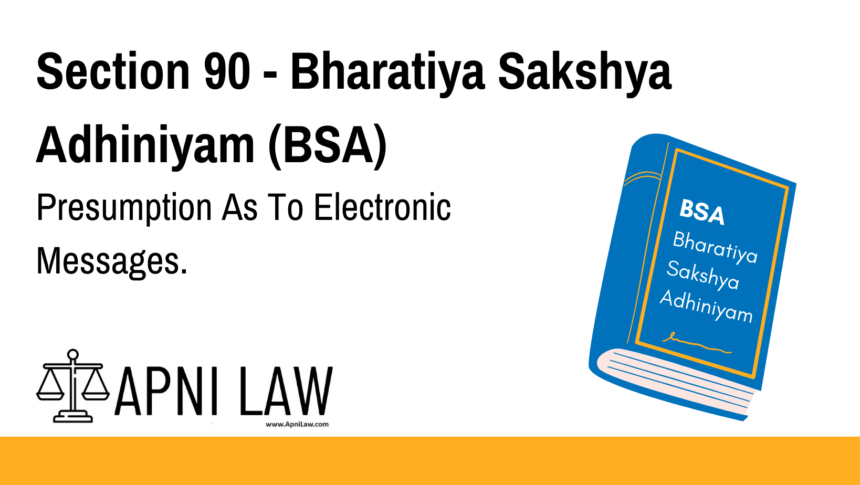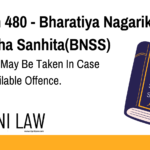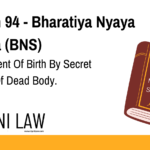Code: Section 90 – Bharatiya Sakshya Adhiniyam, 2023
The Court may presume that an electronic message, forwarded by the originator
through an electronic mail server to the addressee to whom the message purports to be
addressed corresponds with the message as fed into his computer for transmission; but the
Court shall not make any presumption as to the person by whom such message was sent.
Explanation of Section 90 BSA
Section 90 of the Bharatiya Sakshya Adhiniyam (BSA) provides specific guidelines for dealing with electronic messages in court proceedings. It primarily addresses the issue of the authenticity of electronic messages and the presumption the court can make regarding the transmission of such messages.
Key Provisions:
-
Presumption of Message Correspondence:
-
The court may presume that the content of an electronic message forwarded by the originator to the addressee corresponds exactly with the message fed into the sender’s computer for transmission. This helps in accepting the integrity of the message content without requiring detailed verification.
-
-
No Presumption on Sender’s Identity:
-
The court does not make any presumption about the identity of the person who sent the electronic message. It only presumes the content corresponds to what was sent from the sender’s computer, not who actually sent it.
-
This section helps in dealing with electronic messages in legal cases, ensuring that the focus is on the content of the message rather than the identity of the sender unless other evidence is provided.
Illustration
Example 1: Email as Evidence in a Contract Dispute
In a contract dispute, a party presents an email as evidence of the agreement. The court will presume that the email content corresponds to what was originally sent from the sender’s computer, but it will not automatically assume the email was sent by the person who is listed as the sender unless further evidence is provided.
Example 2: Verifying an Email in a Defamation Case
If an electronic message is presented in a defamation case, the court may accept that the message received corresponds to what was transmitted by the originator, but will require additional proof to establish the sender’s identity.
Common Questions and Answers on Section 90 BSA
1. What does Section 90 BSA presume about electronic messages?
Section 90 presumes that the content of an electronic message corresponds with what was originally fed into the sender’s computer for transmission, ensuring the message’s integrity.
2. Does the court assume the identity of the sender of the message?
No, Section 90 does not presume who sent the message; it only deals with the content of the message and its integrity during transmission.
3. Can the presumption of message correspondence be challenged?
Yes, the presumption of message content can be contested if there is evidence to suggest the message was altered during transmission or was not sent by the purported originator.
4. What kind of messages does Section 90 apply to?
Section 90 applies to electronic messages, particularly those sent through email servers, and addresses the integrity of the message content as it is received by the addressee.
5. How does Section 90 simplify the legal process regarding electronic messages?
By presuming the integrity of the message content, Section 90 reduces the need for verification of every electronic message, making it easier to accept electronic communication as evidence in court.
Conclusion
Section 90 of the Bharatiya Sakshya Adhiniyam (BSA) provides clarity on how electronic messages should be treated in court. The presumption of content integrity aids in simplifying the legal process, although it does not extend to assuming the sender’s identity. This ensures that courts can efficiently handle electronic evidence while maintaining fairness.
For further details on the BSA and related legal provisions, visit ApniLaw.












